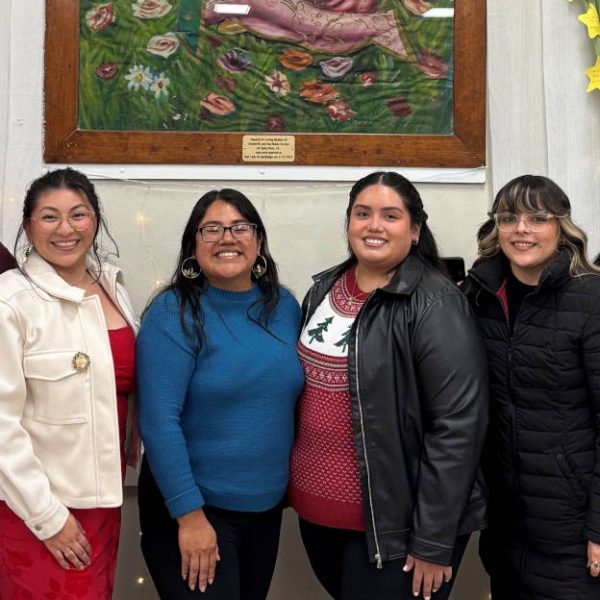By Christina Bagaglio Slentz, Ph.D.
When many think of St. Francis of Assisi, they think of his love for animals and the beauty of creation, which is fair, recognizing that he is the patron saint of ecology.
Francis’ conversion moment comes, however, following his experience of war and imprisonment, when he encounters a leper, the most marginalized and vulnerable of society. Seeing “Jesus incognito” in the man, he embraces and kisses him, and shortly after abandons his life of privilege, adopting a life of extreme poverty. Thus, Francis earned the nickname “Il Poverello,” “the little poor one.”
This deep devotion to the poor became Francis’ response to Christ, who had spoken to him from the crucifix in an old, dilapidated church, telling him to rebuild the Church. Though initially confused and thinking he was meant to repair the building, Francis comes to understand Jesus’ meaning.
His way of voluntary poverty stood in radical contrast with the significant wealth of Church leaders at the time, but Francis’ example of how to live the Christian ideal proved authentic and compelling, drawing thousands of followers and successfully restoring not a physical church, but rather its spiritual framework, the original values of Jesus. Certainly, St. Francis continues to offer us a good path to the right relationship with God today.
The cry of the Earth and the cry of the poor
Similarly, Pope Francis recognized in our current environmental crisis a mass departure from Christian values, observing a grave injustice. Those who profit from industry and consume the most globally — typically the wealthiest — contribute most significantly to dynamics that harm the planet, producing environmental outcomes that impact those who contribute the least — typically the world’s poorest, those who are least able to withstand these effects.
These populations are described as “environmentally vulnerable,” a determination broadly based on factors of exposure and sensitivity to environmental impacts balanced against capacity to adapt or demonstrate resilience. While these patterns play out globally, they also play out in our own region.
In the CalEnviroScreen map, for example, these factors of environmental vulnerability are divided into “pollution burden” and “population characteristics” variables.
Largely due to historical, discriminatory real estate practices and today’s disparate availability of affordable housing, low-income communities are concentrated where the burden is typically high. Industries have been allowed to operate in close proximity to these neighborhoods, and highways run through and over them. Landfills are often nearby.
This ecological distress is compounded as these cities receive less tax revenue, making it harder for them to fund environmental clean-ups and the infrastructure needed to keep communities safe, particularly during extreme weather events. Moreover, families may or may not have access to good healthcare and property insurance coverage.
Five parishes in the diocese fall into the most vulnerable shading of red on the CalEnviroScreen map. Seven more fall into the next level of environmental vulnerability. They are predominantly located in the heavily industrial South Bay area and the Imperial Valley, where the evaporating Salton Sea and corporate agriculture threaten air quality. The Valley faces the added challenge of climate change, projected to increase drought and intensify periods of extreme heat.
By contrast, 24 parishes, largely in our coastal region, are assessed as least vulnerable. Eleven more fall into the next category of less vulnerability. Many have adopted solar energy, which mitigates the effects of climate change, but what more can we do as a community of believers to reconcile this disparity? How might we respond to the cry of the poor? Amplify their voices? Seek to be in solidarity with the vulnerable, as St. Francis did?
‘Pilgrimages of Hope for Creation’
Pope Francis writes in “Laudato Si,” “We are faced not with two separate crises, one environmental and the other social, but rather with one complex crisis which is both social and environmental. Strategies for a solution demand an integrated approach to combating poverty, restoring dignity to the excluded, and at the same time protecting nature” (“Laudato Si,” No. 139).
As the Diocese of San Diego is arguably the most biodiverse diocese in the United States, we have been given much. We also know that, to whom much is given, much is expected. The array of gifts with which our parishes have been blessed suggests that we have great capacity to address this complex crisis if we are willing to work together.
To this end, two “Pilgrimages of Hope for Creation” will take place this fall — part of a nationwide effort. The first, on Oct. 18, travels from St. Charles Borromeo to Immaculate Conception Parish in Old Town. Register and find out more at bit.ly/POH4CSanDiego.
The second, A Pilgrimage to the Salton Sea, Nov. 14 to 16, begins in El Centro with a kick-off dinner at Catholic Charities, followed by a Night Sky presentation by Father Rob Lorenz of the Vatican Observatory. We then travel to the Jubilee church in Brawley and conclude with a blessing of the Salton Sea and Mass at the Christ the King Mission Church. If interested, sign up for updates at bit.ly/SSPilgrimageInterestForm.









